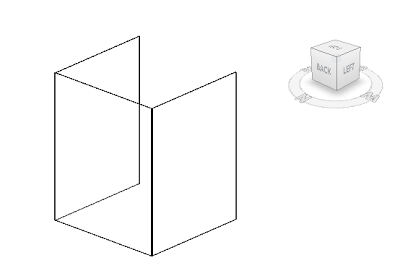"I have a vestibule with 3 walls built as curtain walls. I have a family built for a set of double glass doors as: curtain wall-storefront-dbl and saved in the doors family folder. This door family is not available as a door type and cannot be inserted in a wall. How do I get the curtain wall doors to insert into the curtain wall storefront opening?"
This is a common question when working with curtain wall doors and arises because, in Revit, curtain walls treat doors differently than walls treat doors. When adding a door to a normal wall you choose the door type, place your cursor over the wall, then click to place the door in the proper location and create the opening at the same time. When working with curtain walls, the steps are a bit different because the curtain walls see the door as if it is a panel rather than a door. This is also why regular doors and curtain wall doors are not interchangeable. To add a CW door into a CW you need to partition the wall first and then replace an existing panel with a curtain wall door.
Here's how:
First off, you'll need to load the curtain wall door into the project:
1) From the Insert tab, click the Load Family button in the Load from Library panel
2) Navigate to the folder where the curtain wall door family file (.rfa) is located.
3) Select the file then click Open.
To add a curtain wall door to a curtain wall object, follow these steps:
2) Partition it using the Curtain Grid tool from the Home tab > Build panel.
3) Hit Esc to exit the Curtain Grid tool then place your cursor over one edge of the panel that you want to replace with a curtain wall door. Tap the Tab key until the panel perimeter highlights then click it to select the panel.
4) With the panel highlighted, click the drop-down in the Properties panel and select the curtain wall door type that you want to replace the panel with.
The door replaces the panel and conforms to the size defined by the curtain grids.
As you can see, adding curtain wall doors to curtain walls is a straightforward process in Revit; it's just different than the technique used to add normal doors to normal walls. If there are other questions out there, feel free to ask.








